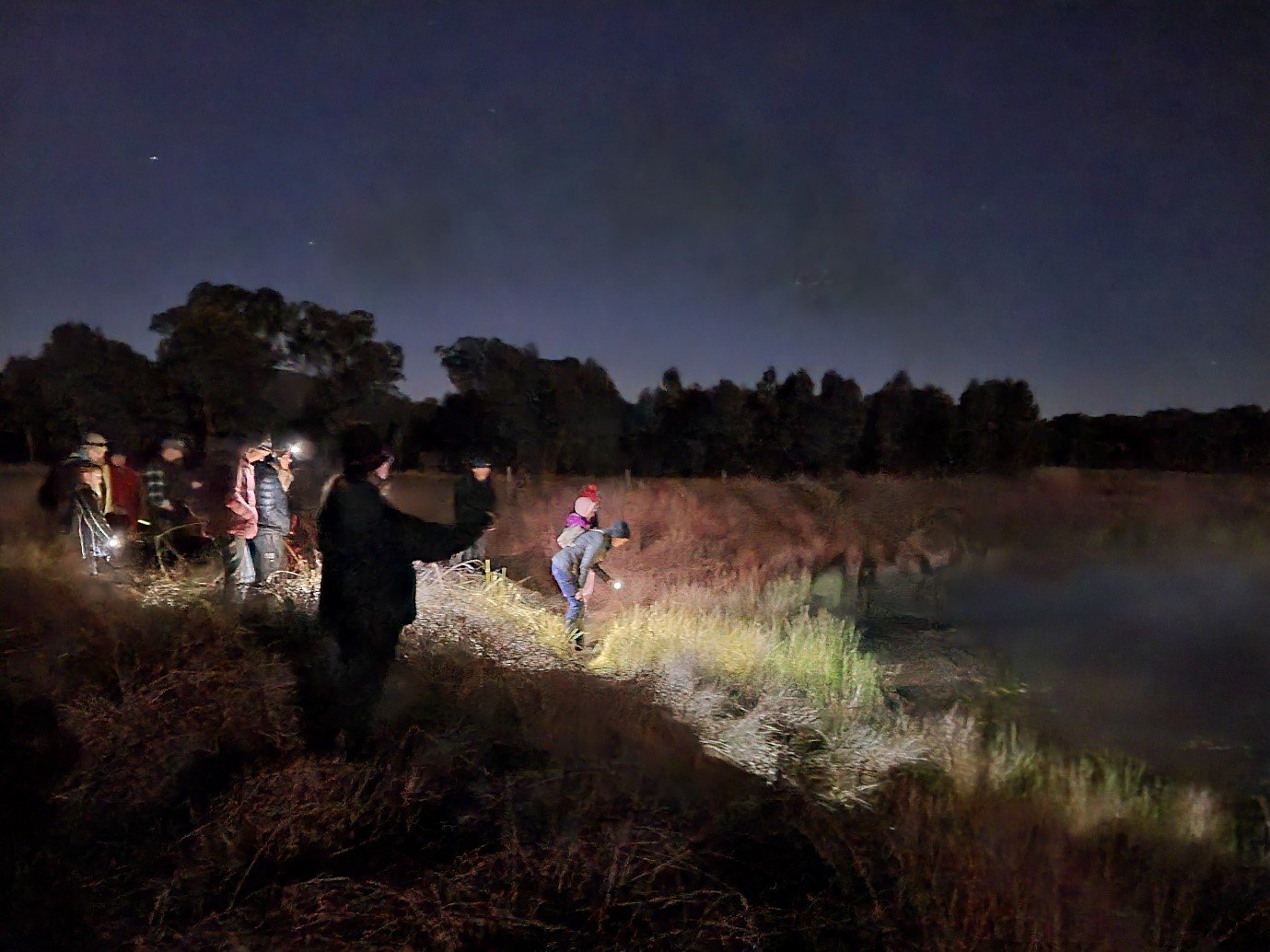Collecting better biodiversity data through citizen science
Will people record calling frogs, everywhere, all at once?
Smartphones have revolutionised the way we collect scientific data, including biodiversity information. Now, thanks to millions of participants on their phones using apps like iNaturalist and eBird, citizen science datasets contain some of the best available data on plants and animals around us and guide global conservation decisions. Participants of the Australian Museum’s FrogID project alone have submitted over 500,000 audio recordings of calling frogs, resulting in 870,000 records of frogs across Australia since 2017! This data has been vital in understanding the impacts of the 2019-2020 black summer bushfires.

Dr Jodi Rowley using the FrogID app.
Image: Jodi Rowley© Australian Museum
But like most biodiversity data, citizen science records can be patchy, with lots of information from some areas and times, and few from others. I love that citizen science is opportunistic – anyone can record wherever and whenever they like. However, this does influence the utility of the data to address conservation concerns, in turn affecting conservation decisions. As far as I was aware, no one had ever asked the participants if they would be willing to change when and where they record, and if so, why?
So in 2020, my colleagues and I surveyed over 1,200 FrogID participants to understand their motivations for volunteering and participating in FrogID citizen science and to find out what would motivate them to help improve the sampling of biodiversity. For example, could the FrogID project highlight places with fewer submissions, or ask for submissions at times of year when submissions are far and few between?
We developed questions addressing: (1) current behaviour (over space and time); (2) motivations for participation in FrogID; (3) prompts that would motivate changes in temporal behaviour; (4) prompts that would motivate changes in spatial behaviour; (5) barriers that limit participation (for example – are you limited by transportation options, safety, or just plain free time?) and (6) how social and competitive design features of the project would influence participation. We made sure to ask about changes that were feasible and would have measurable outcomes, improving the quality of FrogID data as a whole.
The FrogID users who responded to our survey were overwhelmingly motivated by the aims of the program itself: to collect data on frogs that is useful to science and effective conservation. Off to a great start! Amazingly, they also said they were willing to change both where and when they contribute data to the project. The most compelling reasons to change the way they gathered data were to collect information known to add value and to engage in regular sampling of a nearby area. Again, great news – both of those could improve the scientific value of the data.

FrogID users out at night to record frogs, including the Endangered Sloane’s Froglet (Crinia sloanei) with the FrogID app.
Image: Paula Sheehan.© Paula Sheehan.
We found that people’s willingness to tweak their recording habits are very much in line with their motivations for contributing to biodiversity conservation. Willingness to change behaviour wasn't linked with how often they were recording. This means that casual and daily users were both interested in the same types of information – such as where and when data would be most valuable, and why it is important. Small changes among a small number of people can make a big difference towards filling in missing data important for making informed conservation decisions.
This is a game changer for citizen science! By filling in the missing puzzle pieces, we can collectively make citizen science data even more powerful as a conservation tool. The FrogID team is keen to explore ways to collect more meaningful biodiversity data with FrogID participants – stay tuned for further research on this on the FrogID science page.
Maureen Thompson, Technical Officer, Herpetology & PhD Candidate Australian Museum Research Institute & UNSW Sydney.
More information:
Thompson, M.M., Moon, K., Woods, A., Rowley, J.J.L., Poore, A.G.B., Kingsford, R.T., & Callaghan, C.T. (2023) Citizen science participant motivations and behaviour: Implications for biodiversity data coverage. Biological Conservation. https://doi.org/10.1016/j.biocon.2023.110079.
Acknowledgements:
This project has been assisted by the New South Wales Government through its Environmental Trust. Final survey and administration procedures were approved by the Human Ethics Committee at UNSW Sydney (HC200544). We would like to thank the Citizen Science Grants of the Australian Government and the Impact Grants program of IBM Australia for providing funding and resources to help build the FrogID App; the generous donors who have provided funding for the project including the Vonwiller Foundation; the Museum and Art Gallery of the Northern Territory, Museums Victoria, Queensland Museum, South Australian Museum, Tasmanian Museum and Art Gallery, and Western Australian Museum as FrogID partner museums; the many Australian Museum staff and volunteers who make up the FrogID team; UNSW for the University International Post Graduate Award, and, most importantly, the thousands of citizen scientists across Australia who have volunteered their time to record frogs. Thank you to everyone who responded to our questionnaire – we so appreciate you!

